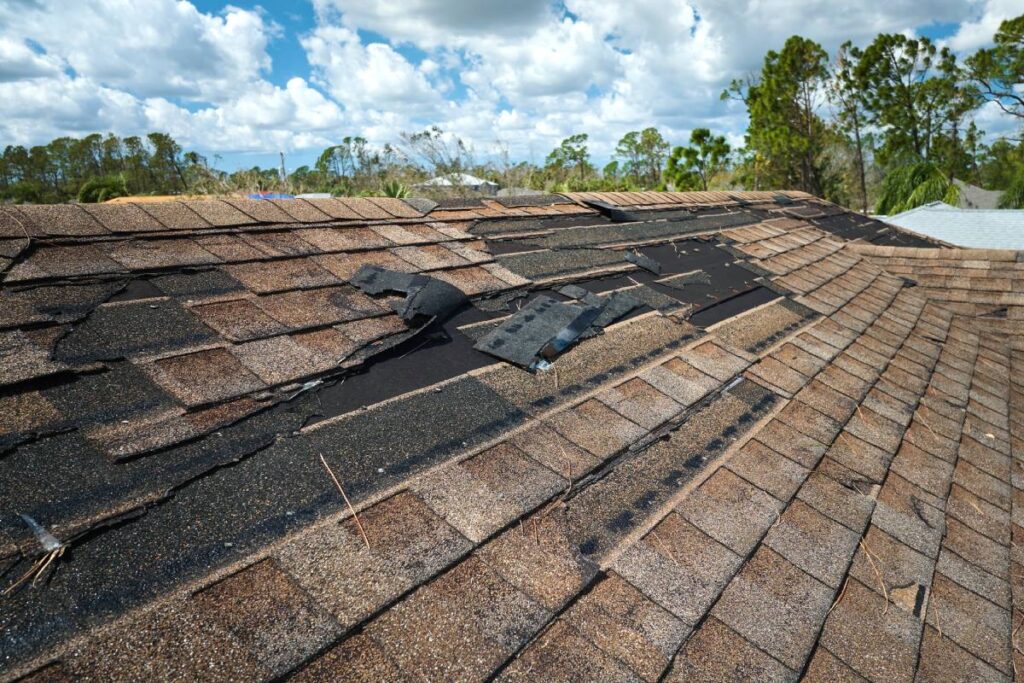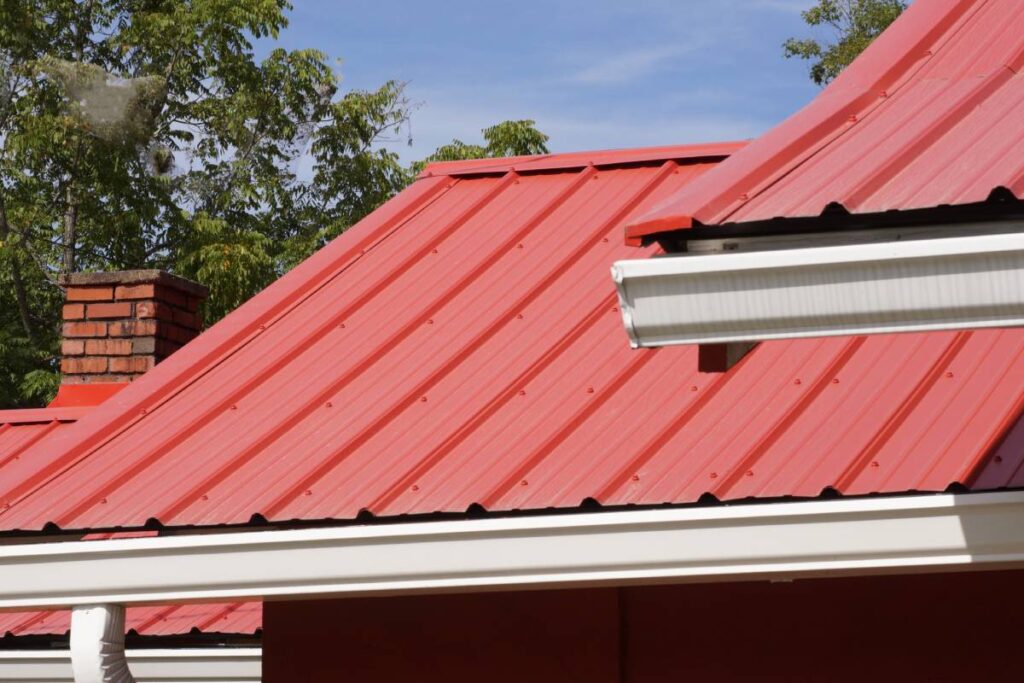If you’ve noticed water dripping from your roof but can’t pinpoint the issue, several common culprits might be at play.
Damaged shingles, cracked tiles, and ice dams are some of the usual suspects. Another factor to consider is inadequate ventilation. Yet, none of these causes are as glaring as a flat-out damaged roof.
When your roof starts leaking for no apparent reason, it’s time to address the problem. Let’s explore the main reasons behind roof leaks.
4 Common Causes of Roof Leaks
Damaged Shingles and Flashing
If you’re dealing with a leaky roof, prompt action is essential. Broken or damaged shingles can allow water to seep in, so don’t delay in fixing them.
A missing shingle can indicate underlying issues like rotting sheathing or improper installation. If the nails securing the shingles are too close to the edge or outside the recommended zones, it can lead to shingle breakage. Although repairs can be costly, ignoring leaks can lead to even greater damage. To prevent serious problems, it’s advisable to have a professional roofer inspect your home.
In addition to missing shingles, pay attention to shingle seams, which are prone areas for leaks. If the seam is exposed due to a missing shingle, it’s likely to result in leaks. On the other hand, if the shingles fully cover the seam, the risk of leakage is reduced.
One damaged or missing shingle can compromise the entire shingle pattern, causing water to spread several feet from its original entry point. Even if the immediate roof damage is minor, neglecting repairs can increase costs and lead to interior damage. Promptly replacing damaged shingles is essential to prevent further water damage and potential infestations.
Leaky roofs not only harm your home’s interior but can also cause structural damage and mould growth. Early intervention can keep repair costs lower than replacing or fixing a damaged section of the roof. A damaged roof is not only an inconvenience but also diminishes your property’s curb appeal, making it look older and less charming.

Broken Tiles
If you find broken tiles on your roof, take action to fix them ASAP. Broken tiles can allow water to penetrate your roof, potentially damaging its structure, including rafters and beams. If left unrepaired, this can lead to rot, necessitating either partial or complete roof replacement. Keep an eye out for water spots on your ceiling, as they signal a leak. To address broken tiles, it’s best to consult a licensed roof repair specialist.
Hairline Cracks in Tiles
Hairline cracks in your roof tiles may initially be challenging to spot, but they can quickly worsen due to wind, rain, or foundation movements. It’s crucial to address these cracks promptly to prevent further damage.
Roof or Gutter Leaks?
Sometimes, it’s difficult to determine the source of a leak in your roof area. While you suspect it’s from the roof, the issue might actually stem from your gutter system. Always include a careful inspection of your gutters when examining your roof, as they could be the source of the problem. Clogged gutters that could block the main drain which will lead to overflowing, often caused by debris or loose gutter guards, can lead to ceiling and wall leaks due to water pooling.

Gutters are typically made of metal and can rust when their protective coating is compromised. For example, a branch hitting the gutter can create a break in the top layer, exposing the metal to rust and causing a hole that leads to gutter leaks. If your property has many trees nearby or overhanging, it’s a good idea to invest in tree services to remove overhanging branches. This proactive step can help prevent issues like the one mentioned above.
Benefits of Improving Roof Ventilation
Signs of Inadequate Ventilation
If you’ve been dealing with frequent roof leaks, it’s possible that your home lacks sufficient ventilation in the roof cavity. This can result in moisture accumulation, which settles on your ceiling’s upper layer. In a poorly ventilated roof cavity, this excess moisture can lead to ceiling boards deteriorating, appearing mouldy, or giving the false impression of a roof leak when the roof itself is intact. In humid conditions, the trapped air has no way to escape. Additionally, insufficient ventilation can even invite pest infestations.
The Importance of Attic Ventilation
Many homeowners don’t usually consider how their roof system works, but the attic’s ventilation system plays a crucial role in keeping your home dry and cool. Proper ventilation helps prevent water damage, mould growth, and various issues. It also enhances your home’s air quality and energy efficiency. An experienced roof repair company can assess the situation and recommend solutions, such as adding more attic vents or whirlybirds.
Prolonging Roof Life
Good ventilation not only addresses immediate concerns but also extends the lifespan of your roof. Adequate intake and exhaust vents prevent the accumulation of warm air inside your roof. Without proper ventilation, warm air becomes trapped, leading to preventable problems.



